It had been a dry summer in California’s Redwood Valley Mendocino Lake Complex. A confluence of climate and weather factors meant June through September 2017 were, in fact, times of severe drought. The same weeds and vegetation that saw more precipitation from January to April had dried out. Lush greens turned to dry browns—the kind of kindling that just needed a spark.
Bob Gates and his wife long knew that wildfires were a formidable threat to the area, particularly in such dry conditions. After all, Gates was a local volunteer firefighter. The Gates’ property was in a risky area, being surrounded by vineyards to the west and north.
In the early morning hours of October 9, 2017, Gates saw his worst fear realized: a wildfire that threatened his home and family, one that spread much quicker than anticipated.
“I remember looking out at one point and seeing 13 homes on fire,” Gates says.
The Northern California Firestorm moved so rapidly, it rendered escape impossible for many, including Gates and his wife. The two had to instead shelter in place, taking refuge in a 1,400-square-foot structure just 175 feet from their primary residence. The building, which served as the Gates’ office and art studio, ended up being their saving grace.
In just 15 minutes, the fire burned the Gates’ custom-built, 2,000-square-foot house to the ground. Replete with marble entryways, solid fir doors, tropical hardwood floors, and redwood decking and siding, the structure was reduced to rubble. Their neighbors suffered similar losses.
The fire would go on to burn over 3,600 acres, destroy more than 540 structures and take eight lives. In addition, it did so in just two hours.
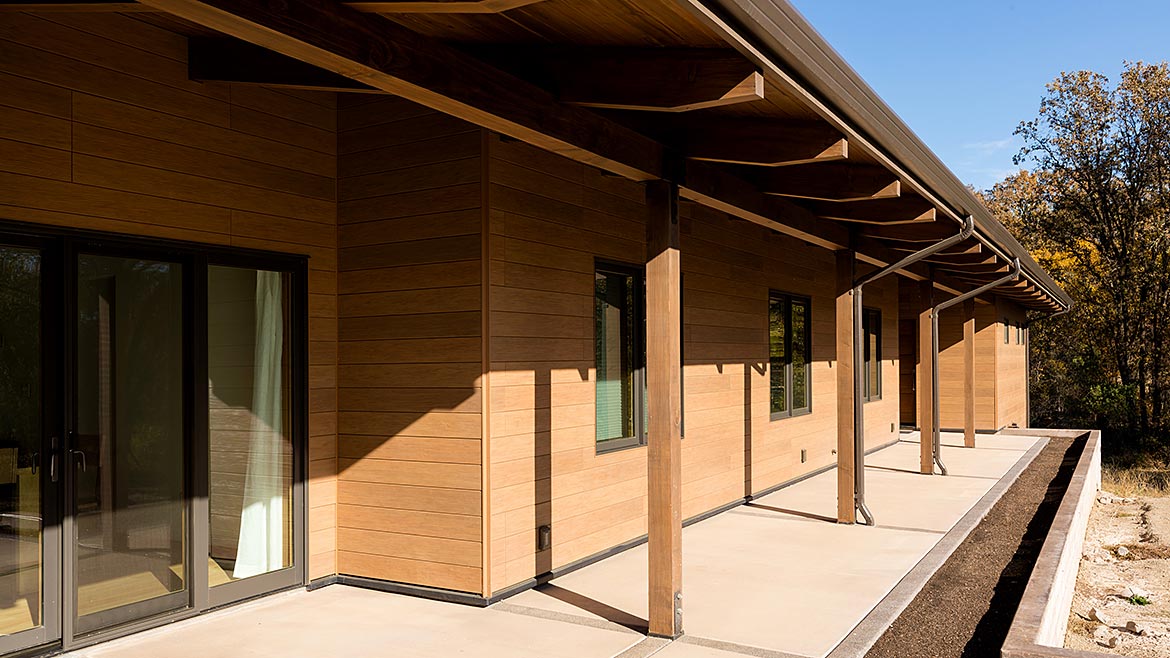
Fire Resistance, Proven
The Gates were lucky. Though their home wore redwood cladding, the secondary structure on their property where they had sought refuge did not. Instead, it was clad with a product composed of fiber cement, with a small amount of cellulose fiber added for dimensional stability. That means it is ignition-resistant.
The panels have faced—and passed—the most stringent fire code tests in the United States. In addition to NFPA 285, they meet NFPA 268 and ULC S134, a pair of tests that evaluate ignition resistance qualities. The manufacturer excelled in the test, being classified as a Class A building material with a flame spread index of zero. It even meets the California Office of the State Fire Marshal’s CA SFM 12.7A-1 test, one that determines the performance of walls when exposed to direct flames.
However, these achievements are in testing scenarios. A wildfire does not adhere to the rules of controlled environments. It is not familiar with measurements such as burn duration or heat flux meters. In a real-world scenario, it is all much less predictable and much more chaotic.
Even after the fire moved through the Gates’ dream home without flinching, the danger had hardly subsided. Fortunately, the shelter’s cladding was up for the challenge.
“This stuff is amazing,” Gates says. “It was battered all night long, with embers like ping-pong balls hitting the siding for about three hours.”
The extent and intensity of the fire were not fully apparent until after Gates and his wife emerged from the office.
“My wife is an art therapist, so our second residence acted as her art studio,” Gates continued. “She had milk crates of tiles that were up against the foundation, and they melted, just like a candle. It didn’t even scorch the panels.”
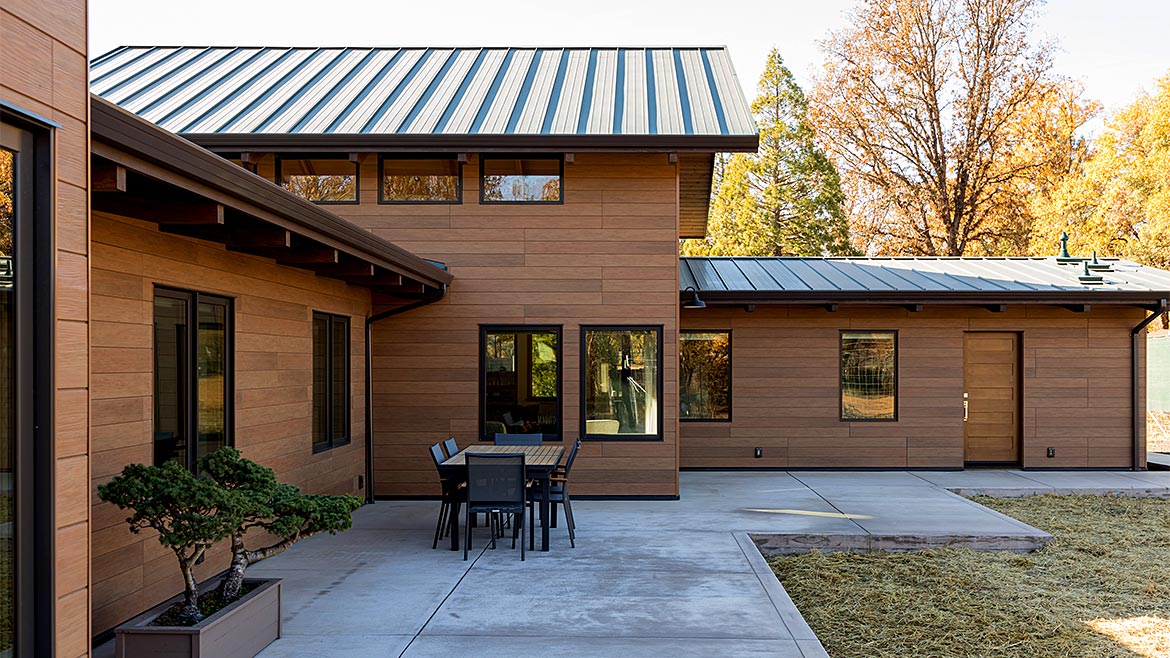
Filling a Cladding Material Gap
Stories of structure survival are infrequent. Wildfires remain a perennial threat throughout the United States, but particularly out west. Few materials offer complete fire protection. Given the ongoing challenges associated with climate change, architects and designers are more readily considering fire resistance when specifying products for the building envelope.
Wood becomes fuel. Vinyl melts. Metal plates can be pricey. Brick can be fire-resistant but offers limited aesthetics.
Fiber cement cladding is filling a much-needed niche in the cladding market. Moreover, with brands offering custom colors with no minimum quantity or additional cost, architects need not compromise on a design for sake of fire resistance. Plus, fiber cement as a medium is highly malleable, being able to closely mimic the looks of wood, concrete, stucco, brick and more.
Alongside other fire-resistant building materials, including insulation and framing, fiber cement siding will withstand fire and limit fire damage. In some cases, the increased fire resistance of the home can even benefit homeowners’ insurance rates.
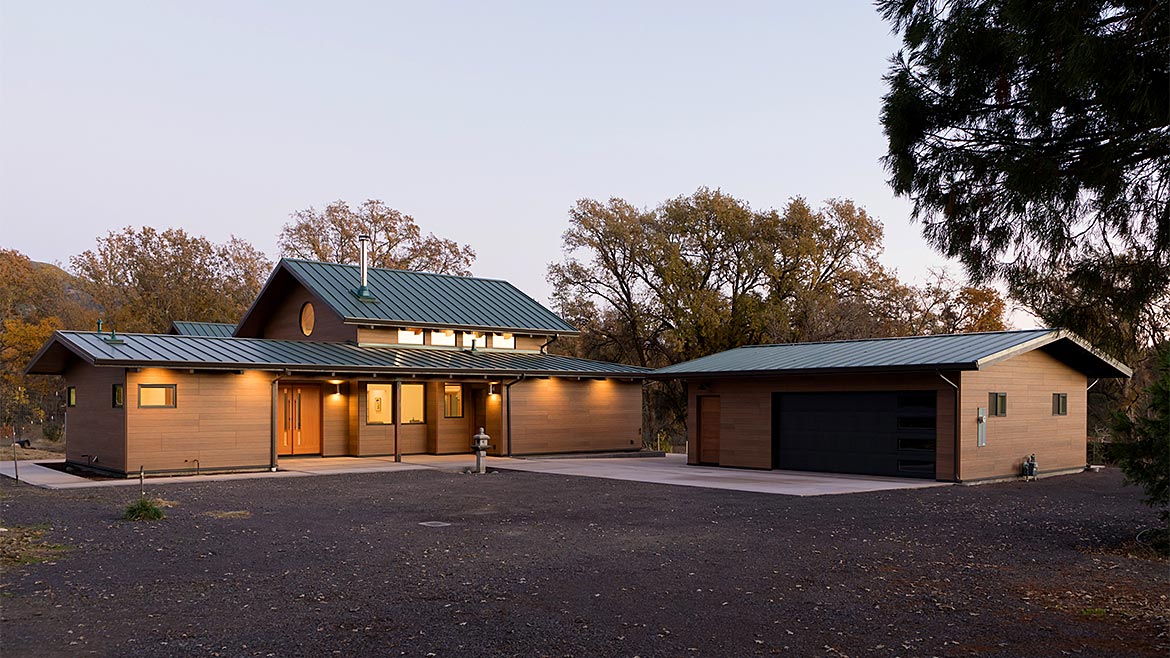
Rebuilding Stronger
Fire resistance remained on Gates’ mind when rebuilding the family home—and not just from wildfires, but also accidents like cooking mishaps, electrical faults or other causes.
Peace of mind was not the only selling point. At 5/8 inch thick, fiber cement panels (AWPs) are thicker than many other cladding options. Nevertheless, being comprised of fiber cement, it does not need staining and is resistant to many of real wood’s pitfalls—pests, warping and rot.
In July 2020, the Gates family home rebuild was complete.




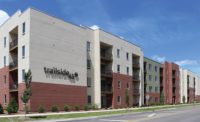
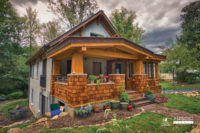
Report Abusive Comment